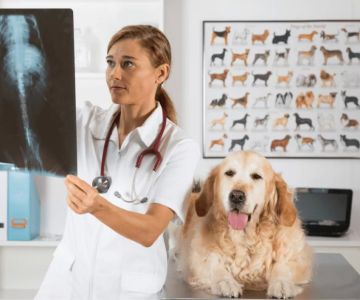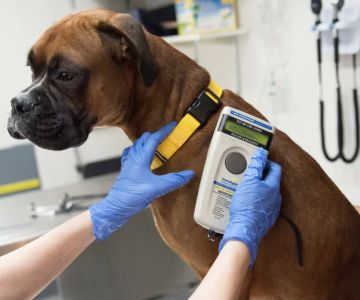Can Humans Take Veterinary Amoxicillin? What You Need to Know
- What is Amoxicillin?
- Veterinary Amoxicillin vs. Human Amoxicillin: Key Differences
- Risks of Taking Veterinary Amoxicillin
- Why Do People Ask About Taking Veterinary Amoxicillin?
- Consulting with a Healthcare Professional
- Alternatives to Veterinary Amoxicillin for Humans
- When to Seek Medical Attention for an Infection
What is Amoxicillin?
Amoxicillin is a commonly prescribed antibiotic used to treat various bacterial infections in both humans and animals. It belongs to the penicillin group of antibiotics and works by preventing bacteria from forming cell walls, which eventually kills the bacteria. This medication is effective in treating a range of infections, including ear infections, throat infections, urinary tract infections, and even certain types of pneumonia.
While amoxicillin is widely used for humans, it is also available in veterinary forms. This brings up the question: can humans take veterinary amoxicillin? In this article, we will explore whether it is safe for humans to use veterinary amoxicillin, the risks involved, and the key differences between the versions used for animals and humans.
Veterinary Amoxicillin vs. Human Amoxicillin: Key Differences
Veterinary amoxicillin is formulated specifically for animals and often comes in different dosages, concentrations, and forms (such as tablets, liquids, or injectables). While the active ingredient—amoxicillin—is the same in both veterinary and human medications, there are some important differences that should be noted:
- Concentration and Dosage: Veterinary amoxicillin may have different dosages based on the size and weight of the animal it is intended for. Animals, particularly larger ones like dogs and horses, may require higher doses than humans, which can make veterinary amoxicillin more potent in comparison to the human version.
- Formulation: Veterinary amoxicillin may come in forms more suitable for animal administration, such as chewable tablets or liquids flavored for animals. These may not be appropriate or palatable for human consumption.
- Regulation and Approval: Veterinary medications are not regulated to the same standards as human medications. This means that while amoxicillin is safe for use in animals, it may not undergo the same level of scrutiny for human use, which increases the potential for side effects or contamination.
Risks of Taking Veterinary Amoxicillin
While it may be tempting to use veterinary amoxicillin as a cheaper alternative or in emergency situations, there are significant risks involved. Some of the risks of taking veterinary amoxicillin for humans include:
- Incorrect Dosage: Since veterinary amoxicillin is formulated for animals, the dosage might not be appropriate for humans. Taking an incorrect dose can result in under-treatment or potential toxicity.
- Side Effects: Even though amoxicillin is generally well-tolerated in humans, veterinary versions may contain additional inactive ingredients or preservatives that could cause adverse reactions in humans.
- Contamination or Impurities: Veterinary medications may not be subjected to the same rigorous quality control standards as human medications. As a result, there’s a risk of contamination or impurities that could affect your health.
- Drug Interactions: Amoxicillin can interact with other medications you may be taking. If you take veterinary amoxicillin without consulting a healthcare provider, there’s a risk of harmful drug interactions that could lead to serious complications.
Why Do People Ask About Taking Veterinary Amoxicillin?
Some people might be curious or tempted to use veterinary amoxicillin for several reasons. For example:
- Cost: Veterinary medications are often less expensive than their human counterparts, which can lead people to look for cheaper alternatives when they have a bacterial infection.
- Availability: In some remote or rural areas, access to a healthcare professional may be limited, and individuals might consider veterinary medicine as a readily available solution.
- Emergency Situations: In some cases, people may find themselves in urgent situations where they do not have access to human amoxicillin, and veterinary amoxicillin may be the only option available at the time.
Consulting with a Healthcare Professional
If you or someone you know is considering taking veterinary amoxicillin, it’s critical to consult with a healthcare professional first. A doctor or pharmacist can evaluate your symptoms, prescribe the correct medication, and ensure that you receive proper treatment. Self-medicating with veterinary drugs can be dangerous, and only a healthcare provider can give you the proper guidance on how to manage your health safely.
Alternatives to Veterinary Amoxicillin for Humans
If you are dealing with a bacterial infection and are in need of amoxicillin, there are safe and effective alternatives available through licensed healthcare providers. Some of the most common alternatives to veterinary amoxicillin for humans include:
- Human-Grade Amoxicillin: Your doctor can prescribe the correct dosage of amoxicillin that is specifically formulated for humans. This ensures that you are getting the right amount of the medication without the risk of impurities or incorrect dosages.
- Other Antibiotics: Depending on the type of infection, other antibiotics may be more appropriate. Your healthcare provider can help you determine the best treatment plan based on your individual needs and health status.
- Over-the-Counter Alternatives: In some cases, over-the-counter medications or treatments might be sufficient to address milder infections. Always check with a healthcare provider before self-treating any condition.
When to Seek Medical Attention for an Infection
If you are experiencing symptoms of an infection, such as fever, pain, redness, or swelling, it is essential to seek medical attention promptly. Delaying treatment can result in the infection worsening, leading to complications. Always consult a healthcare professional to determine the right course of action for your health condition.
In conclusion, while veterinary amoxicillin may seem like an accessible and cost-effective option, it is not safe for human consumption. It is crucial to seek the proper treatment through a healthcare provider to ensure your health and safety. If you need help understanding your options or finding the right treatment for your condition, don’t hesitate to consult a medical professional.
SEO Title: Can Humans Take Veterinary Amoxicillin? Risks and Alternatives
SEO Keywords: can humans take veterinary amoxicillin, veterinary amoxicillin for humans, risks of taking veterinary amoxicillin, human vs veterinary amoxicillin, alternatives to veterinary amoxicillin
SEO Description: Can humans take veterinary amoxicillin? Learn about the risks of using veterinary antibiotics, key differences between human and veterinary versions, and the right alternatives for treating infections safely.











